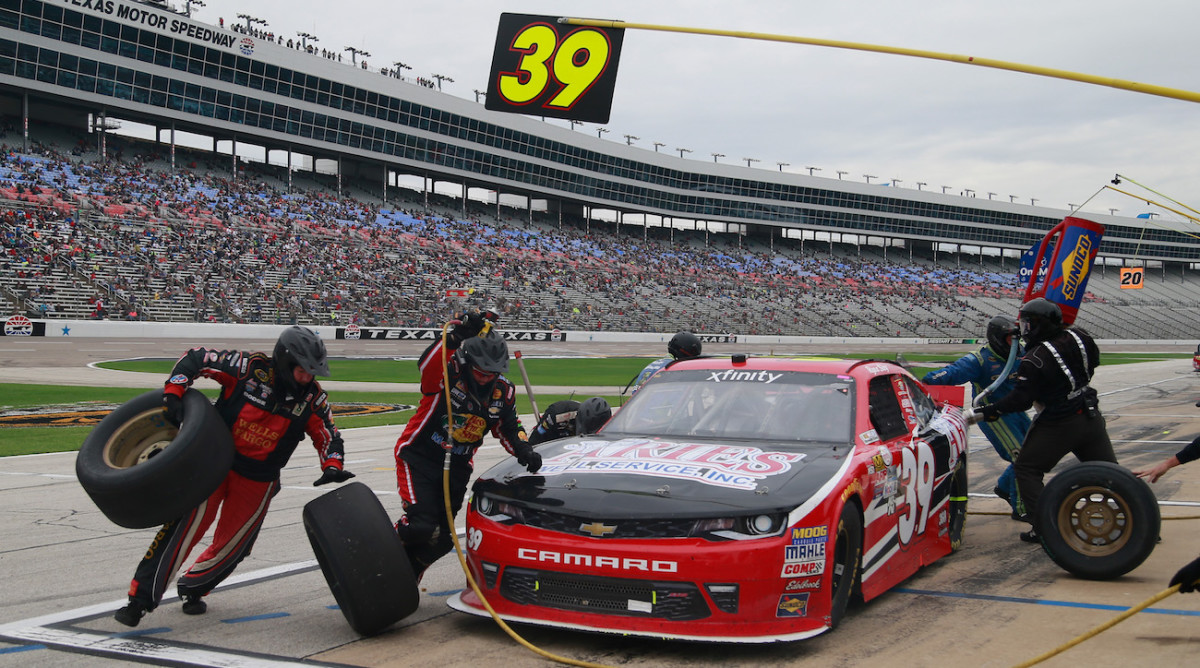NASCAR Underdog Ryan Sieg Looks to the Future


Drivers across all three NASCAR series will run their final races of the season this weekend. Most of them are no longer in contention for the championship and are already looking toward improving in 2017.
One of those drivers is Ryan Sieg, who recently finished 11th in the Round of 12 in the NASCAR Xfinity Series playoff. Running a NASCAR team is very expensive, and yet Sieg and his family operate Ryan Sieg Racing on a budget that is, as he puts it, “about a quarter” of other teams’ budgets. So, how does he do it?
He got into the sport at an early age. His grandfather raced dirt cars and got Sieg and his brother to do the same when Sieg was seven or eight years old.
In 2009, he decided to start his own NASCAR team, and he began in the Truck Series, which is two steps below the Sprint Cup Series.
“We kind of wanted to do it on our own, and we are more in control,” says Sieg. “[It had] been a goal to make it on our own.”
After five years of running in the Truck Series, his team moved up to the Xfinity Series.
“We ran pretty good in it,” Sieg recalls.
Sieg’s goal, of course, is to contend for a championship. His number 39 Chevrolet made the Xfinity Chase, but Sieg missed the Round of 8 by six points.
Most NASCAR teams are based in Charlotte, North Carolina, but Sieg is based in Sugar Hills, Georgia, which is about a 45-minute drive from Atlanta.
There are advantages and disadvantages to working three-and-a-half hours away from the rest of the NASCAR world.
“Everything is not on hand,” he says, “so we have lots of parts shipped in.” He also says it’s harder to get people in Georgia to work on the team.

On the other hand, says Sieg, “It’s not too big of a disadvantage except when you need something right away.”
And, as he points out: “You know [the people who work for you] are pretty much going to stick with you, having to move to Georgia. You are going to have some loyal guys.”
In North Carolina, by comparison, people “can just leave and go to another team right there. So, a lot of people swap and quit on you.”
When Sieg talks about what having a smaller budget means to his team, he focuses on the fact that they have to use older parts.
“We just don’t have all the resources,” Sieg says. He adds, “Other teams use three different chassis each year, where we just run the older stuff.”
“All of our stuff is two to three years old,” he says. “The frames [and such].”
Sieg’s team also has to do without computer programs and simulators to help with testing and to simulate things such as air resistance. Doing these things would allow the team to tweak the car so it can be the best possible design.
“We just don’t have all the latest, greatest equipment,” he says.
Sieg says he never imagined he would get this far when he started in the Truck Series. “I never knew where it was going to go, but I didn’t really expect us to move to the Xfinity Series,” he says.
He wants to move up to Sprint Cup racing soon but explained that it was hard to do for several reasons, one of those being that there is a cap to the amount of Sprint Cup teams.
“[In] Sprint Cup there is a whole lot more money involved. The races are longer. [You] get more sets of tires. The cars have more power,” he explains.
Right now, Sieg may not have the same equipment as teams who operate with a bigger budget, but he is proving that he can contend.
Photographs by (from top) Matt Sullivan/NASCAR/Getty Images; Andy Lyons/Getty Images
